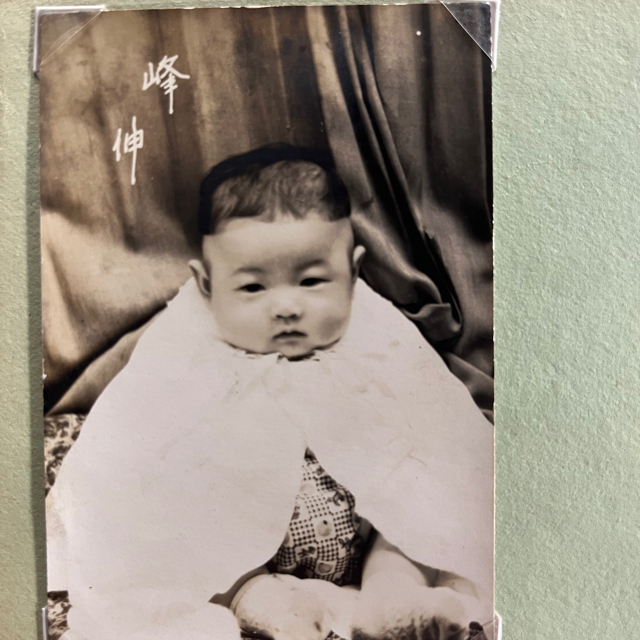Skin T cells maintain their diversity and functionality in the elderly
Communications Biology volume 4, Article number: 13 (2021)
Abstract
Recent studies have highlighted that human resident memory T cells (TRM) are functionally distinct from circulating T cells. Thus, it can be postulated that skin T cells age differently from blood-circulating T cells. We assessed T-cell density, diversity, and function in individuals of various ages to study the immunologic effects of aging on human skin from two different countries. No decline in the density of T cells was noted with advancing age, and the frequency of epidermal CD49a+ CD8 TRM was increased in elderly individuals regardless of ethnicity. T-cell diversity and antipathogen responses were maintained in the skin of elderly individuals but declined in the blood. Our findings demonstrate that in elderly individuals, skin T cells maintain their density, diversity, and protective cytokine production despite the reduced T-cell diversity and function in blood. Skin resident T cells may represent a long-lived, highly protective reservoir of immunity in elderly people.
Introduction
T-cell diversity is required for protective immune responses1. The diversity of naïve T cells bearing new T-cell receptors decreases with age2, although the total number of T cells in blood is maintained secondary to a compensatory expansion of memory T cells and longer survival of naïve T cells in older individuals3,4,5. Elderly individuals show decreased antipathogen responses6, and this immune dysfunction is thought to result from decreased T-cell diversity in the peripheral blood1,7.
Approximately 20 billion T cells reside in the entire human skin8, and these skin T cells consist of diverse populations of recirculating and resident memory T cells (TRM)9,10,11,12. Mouse infection models have shown that tissue TRM can be effectively developed by local immunization and can provide tissue immunity to pathogens and commensals13,14,15,16. Accumulation of TRM has been reported in the peripheral tissues of older mice following infection. Researches on human have revealed the similar developmental process and the persistence of pathogen-specific TRM in human skin. TRM specific for herpes simplex virus-2 accumulate in the genital skin and take part in eliminating the infected cells through the rapid production of cytokines at the time of recurrence17,18. Skin CD4 T cells reactive to varicella zoster virus persist with maintained function in elderly individuals19. Similar to anti-pathogen responses, the development of melanoma-specific TRM is needed for protection against tumor growth20, and these TRM exert their anti-tumor response via activating dendritic cells and cytotoxic T cells21. However, studies on TRMhave also revealed the differences between human and murine models leading to the emphasis on the importance of directly evaluating TRM in human specimens22,23,24. Beside the life span and living environment, one of the outstanding differences between human and murine skin immunology is lack of dendritic epidermal T cells in human skin. dendritic epidermal T cells in murine epidermis competes with CD8 TRM for their survival signals and space25, thus lack of this large population in human epidermis possibly leads to the release of extra niche for TRM.
Here, we demonstrate that skin T cells maintain their density, diversity, and protective cytokine production despite the reduced T-cell diversity and function in blood in elderly individuals, and T-cell profiles are remarkably stable in Japanese and Swedish individuals despite the different environmental and genetic backgrounds of these two ethnic groups.
老化を予防するには、感染症が発展する確率を下げるに越したことはない。そのためには免疫力のレパートリーを蓄えておく必要がある。これまで皮膚免疫が直接の侵入阻止に重要な役割を果たしてきたことは明らかだが、循環する免疫細胞の老化に伴う減少を補う役割が確認された。
私見 皮膚はこのように最大の免疫臓器などといわれてきたが、同じような構造が消化管にもより分化した形で存在するに違いない。
最近の研究では、ヒトの常駐型メモリーT細胞(TRM)が循環型T細胞とは機能的に異なることが強調されている。このことから、皮膚のT細胞は血中のT細胞とは異なる形で老化すると考えられる。我々は、2つの異なる国のヒトの皮膚における加齢の免疫学的影響を研究するために、様々な年齢の二人のT細胞の密度、多様性、および機能を評価した。その結果、T細胞の密度は年齢とともに低下せず、表皮のCD49a+ CD8 TRMの頻度は民族に関係なく高齢者で増加していた。T細胞の多様性と抗原応答は、高齢者の皮膚では維持されていたが、血液では低下していた。今回の結果から、高齢者では、血中のT細胞の多様性や機能が低下しているにもかかわらず、皮膚のT細胞はその密度、多様性、保護サイトカインの産生を維持していることが明らかになった。皮膚に存在するT細胞は、高齢者の免疫力を長持ちさせ、保護する役割を果たしていると考えられる。
皮膚のT細胞プールは血液のT細胞プールよりも維持されている
1つのナイーブT細胞クローンから異なるメモリーT細胞分画が生じ、同じTCRクローンが血液と皮膚の両方に存在する(共有クローン、図3a右、図4a)。血液中では、血液中の全ユニーククローンに対するシェアードクローンの割合(血液中のシェアード/ユニークの割合)が高齢者で有意に増加しており、血液中専属のクローンは加齢とともに減少することが示唆された。一方、皮膚中の全ユニーククローンに対するシェアードクローンの頻度(皮膚中のシェアード/ユニークの割合)は加齢にかかわらず同程度であり、皮膚中専属のクローンは血液中のクローンよりも長生きすることが示唆された(図4b:血液:p = 0.0065、r = 0.6613)。固有のクローンに対する共有クローンの平均頻度から、固有のクローンプールの相対的な大きさを推定した。50歳未満の参加者では、共有クローンが皮膚T細胞プールの1.32%、血液T細胞プールの0.13%を平均して占めていました。したがって、皮膚T細胞プールと血中T細胞プールの相対的な大きさは、1対10.15(=1.32/0.13)と想定された。この比率は、50〜79歳では1対6.42(=2.12/0.33)、80歳以上では1対5.09(=3.41/0.67)となりました。このアルゴリズムに基づいて、高齢者の皮膚T細胞プールの大きさは、血中T細胞プールの1.99(=10.15/5.09)倍に保たれていると推定された(図4c)。これらの結果は、高齢者の皮膚では、血液中よりもT細胞の多様性が保たれていることを示している。
皮膚のT細胞は人生のどこかの時点で循環から生まれたものであるため、皮膚のT細胞はより長く維持され、循環しているT細胞とは不均衡な状態で異なるT細胞レパートリーを形成していると考えられる。さらに、同じクローンを異なる参加者に求めたところ(共通クローン)、異なる個人から得られたT細胞で、同一のTCR配列を持つ共通クローンの数は、80歳以上のグループでは皮膚で増加したが、血液では増加しなかった(図4d)。このように、同じTCRを持つT細胞は、異なる個人の皮膚に分布し、蓄積されていると推定されます。皮膚TRMの増加と皮膚T細胞の抗原反応性の維持を考慮すると、異なる高齢者に共通して見られるこれらのT細胞は、皮膚に存在する共通の抗原を認識して蓄積されている可能性がある。
Treg induction by a rationally selected mixture of Clostridia strains from the human microbiota
Koji Atarashi, Takeshi Tanoue, Kenshiro Oshima, Wataru Suda, Yuji Nagano, Hiroyoshi Nishikawa, Shinji Fukuda, Takuro Saito, Seiko Narushima, Koji Hase, Sangwan Kim, Joëlle V. Fritz, Paul Wilmes, Satoshi Ueha, Kouji Matsushima, Hiroshi Ohno, Bernat Olle, Shimon Sakaguchi, Tadatsugu Taniguchi, Hidetoshi Morita, Masahira Hattori & Kenya Honda
Nature volume 500, pages 232–236 (2013)
Manipulation of the gut microbiota holds great promise for the treatment of inflammatory and allergic diseases1,2. Although numerous probiotic microorganisms have been identified3, there remains a compelling need to discover organisms that elicit more robust therapeutic responses, are compatible with the host, and can affect a specific arm of the host immune system in a well-controlled, physiological manner. Here we use a rational approach to isolate CD4+FOXP3+ regulatory T (Treg)-cell-inducing bacterial strains from the human indigenous microbiota. Starting with a healthy human faecal sample, a sequence of selection steps was applied to obtain mice colonized with human microbiota enriched in Treg-cell-inducing species. From these mice, we isolated and selected 17 strains of bacteria on the basis of their high potency in enhancing Treg cell abundance and inducing important anti-inflammatory molecules—including interleukin-10 (IL-) and inducible T-cell co-stimulator (ICOS)—in Treg cells upon inoculation into germ-free mice. Genome sequencing revealed that the 17 strains fall within clusters IV, XIVa and XVIII of Clostridia, which lack prominent toxins and virulence factors. The 17 strains act as a community to provide bacterial antigens and a TGF-β-rich environment to help expansion and differentiation of Treg cells. Oral administration of the combination of 17 strains to adult mice attenuated disease in models of colitis and allergic diarrhoea. Use of the isolated strains may allow for tailored therapeutic manipulation of human immune disorders.
腸内細菌叢を操作することは、炎症性疾患やアレルギー性疾患の治療において大きな期待が寄せられています1,2。数多くのプロバイオティック微生物が同定されているが3、より強固な治療反応を誘発し、宿主に適合し、十分に制御された生理的方法で宿主免疫系の特定の部門に影響を与えることができる生物を発見する切実な必要性が残っている。ここでは、合理的なアプローチを用いて、ヒトの常在細菌叢からCD4+FOXP3+制御性T(Treg)-細胞誘導細菌株を分離する。健康なヒトの糞便サンプルから始め、一連の選択ステップを適用して、Treg細胞誘導種に富むヒト微生物叢でコロニー化されたマウスを得た。これらのマウスから、無菌マウスへの接種によりTreg細胞数を増加させ、インターロイキン10(IL-)や誘導性T細胞共刺激因子(ICOS)などの重要な抗炎症分子をTreg細胞に誘導する能力の高い細菌17株を分離し、選択した。ゲノム解析の結果、17株はクロストリジウム属のクラスタIV、XIVa、XVIIIに属し、顕著な毒素や病原性因子を持たないことが判明した。17株は、細菌抗原を提供するコミュニティとして、またTGF-βが豊富な環境としてTreg細胞の拡大・分化を助けるように作用する。17株の組み合わせで成体マウスに経口投与すると、大腸炎やアレルギー性下痢症のモデルで疾患が軽減された。分離した菌株を使用することで、ヒトの免疫疾患に対してテーラーメードの治療操作が可能になる可能性がある。
図1. 粘膜炎症、創傷治癒、発癌における上皮由来ケモカインの拡大した役割 A. ケモカインは炎症性腸疾患における免疫細胞輸送を制御していると思われる。損傷あるいは無傷の粘膜バリアの上皮細胞によるケモカインの発現および産生の増加は、自然免疫および適応免疫応答の白血球およびリンパ球の消化管粘膜への輸送を増加させる。B. 上皮バリアーの修復におけるケモカインの潜在的役割 恒常性ケモカインであるCXCL12は、ヒト腸管上皮の細胞に恒常的に発現している。培養モデル系では、CXCL12は上皮移動シグナル伝達経路を活性化し、傷ついた上皮単層膜の閉鎖を促進させる。C. ケモカインは、上皮の形成不全から腫瘍や転移への進行にさまざまな形で関与している。大腸癌細胞におけるCXCL12のエピジェネティックなサイレンシングは、これらの細胞に転移に適した表現型を与え、内分泌ケモカイン勾配に反応するようにする(緑色の丸)。

























